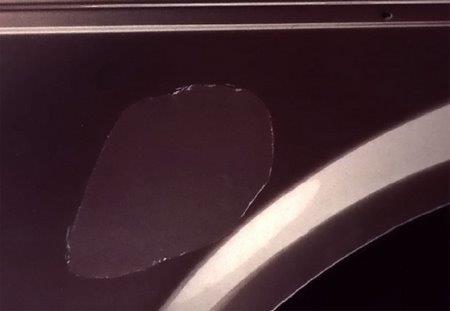 How to obtain a car varnish without imperfection ?
How to obtain a car varnish without imperfection ?
The varnishing is the most difficult exercise, it is the most delicate final touch that crowns all the efforts and the painting work carried out previously. How to obtain the maximum shine, and above all how to maintain the shine of a bodywork varnish, which can often see defects appear immediately after application or during the drying period.
Above all, there are classic automotive varnishes , with long drying times, and for which baking is recommended, and bodywork varnishes called “air drying” which dry quickly and are used for small surfaces.
During the periods of desolvation (evaporation of solvents), then of drying to the touch (surface hardening), then of drying through, it is possible to see the perfect gloss aspect of the shiny and transparent layer deteriorate. finish, with the appearance for example, to name only the most common defects, of drips, micro bubbling, matting (burial of shine).
Apply flawless bodywork varnish
Micro bubbling is due to the imprisonment of solvents in the layers of paint or varnish, due to too rapid a succession of layers and/or an excessively high ambient temperature. Anyone who has experienced this defect once, usually takes care never to take the instructions of the data sheet lightly again... Because the result of a few minutes saved is to have to re-sand everything and start all the work over again. .
This is an example showing that patience and the extreme care given to each preparatory stage and strict compliance with the application guarantee successful work. Achieving a beautiful glossy varnish in 20 minutes on a bodywork is therefore the visible tip of the iceberg (10%), with 90% of flawless work in the lower layers, preparation, cleaning of the spray gun, care taken with the filter air... Then there is this mastery of the perfect gesture which is of course necessary to apply a flawless bodywork varnish (pressure, dilution, distance, angle, speed).
 How to properly prepare the support ?
How to properly prepare the support ?
Meticulous cleaning of the surface before varnishing (dust, grease, silicones, humidity, sanding residues)
Use a wiping pad to remove the last dust
Do not touch a surface when this one has been cleaned
Ensure that the undercoat is completely dry (evaporation of solvents, drying of hydrobases)
Ensure that the surface is not too hot
Ensure that all traces of degreaser are removed
Ensure that the surface before painting is completely dry
Carry out sufficient sanding with the correct grain
Under what conditions should the varnish be applied ?
Ensure the correct temperature of the cabin (15-25°C).
Room or cabin clean and dust-free, with sufficient air circulation.
Spray in conditions of low humidity.
Our product advice
Ensure compatibility with the undercoats.
Use the hardener and thinner corresponding to the varnish.
Use the minimum amount of thinner.
Adjust the viscosity of the mixture in order to have a good fluidity.
Use the hardener and thinner corresponding to the temperature.
What material to use and how ?
Eliminate any moisture in the pipes and compressors.
Purge your compressor and pressure regulator regularly.
Adjust your gun correctly (air pressure and jet width).
Use a perfectly cleaned and dry gun.
Spray from the right distance, at the right speed, at 90° to the surface.
How to dry the varnish ?
Respect the correct time between the two coats of varnish.
Do not bake beyond the recommended time or above the recommended temperature.
Respect the drying time before delivery.



















































































